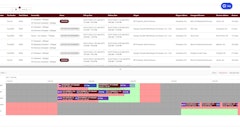
Shipping perishable, consumable goods is notoriously difficult. These products are held to more stringent regulations and requirements than non-perishable products, and there is a larger margin for error when it comes to delivery. Speed, packaging, and equipment type all play a role in cost efficiency and customer satisfaction. The challenges have increased even more over the last decade with the boom in perishable e-commerce. According to a report from the U.S. International Trade Administration, food and personal care products accounted for the highest level of e-commerce growth in the wake of the COVID-19 pandemic with a forecast increase of 26% in revenue.
Brands are often tempted by the cheapest carrier to ship customer orders, which often means sacrificing service and safety. In addition, today’s consumers’ sustainability demands are rising rapidly. While zone skipping is not a new concept, it can be a game changer for those shipping perishable freight. Advantages include faster shipping, reduced damages, cost-efficiency, better regional market penetration, and sustainability, leading to higher customer satisfaction. To understand its advantages for perishable shippers, it’s first important to understand what it means.
What is zone skipping?
A shipping zone is a geographical region to which carriers deliver. It's defined by a grouping of zip codes and measured from where the package is shipped to its destination. Zones are set directly by the carrier and often change without notice.
Zone skipping is a logistics strategy that involves consolidating shipments into a larger shipment with freight all bound for the same destination. This allows the freight to bypass the traditional hub and spoke network including intermediate distribution centers and zones. This means that the shipper pays a regional rate, which significantly reduces the cost of last-mile delivery.
What are the advantages for perishable shippers?
- Faster deliveries. Zone skipping removes unnecessary sortation stops with direct routing, significantly reducing transit times. For time-sensitive shipments like perishable freight, zone skipping can be the difference between a spoiled product and a fresh one. Traditional distribution models involve multiple stops at intermediate warehouses, cross-docks, or other hubs, which can lengthen the overall transportation process. Much like needing to transfer while taking a commercial plane flight, sometimes these extra stops can take freight further off a more direct course, introducing even more risk.
- Reduced damages. Damages and delays often occur when a perishable product is unloaded and sorted, and the risk is even higher at ambient sort centers where perishable freight needs to rely on the right amount of dry ice, gel packs, and packaging to keep it at the right temperature. In addition, by remaining on one vehicle during the entire journey, it also reduces the risk of theft, which can be particularly advantageous for high-value shipments. Zone skipping bypasses these bottlenecks, ensuring products reach their destination in top condition and meet all the safety standards.
- Sustainability. According to recent research findings from Deloitte, we are quickly approaching a tipping point where truly sustainable brands will prevail by capturing consumers' trust. One in four consumers are prepared to pay more for sustainability and 16% believe measurable carbon footprint data is what makes a product or service sustainable. Zone skipping lowers Scope 3 emissions (those from transportation/supply chain) by reducing the number of trips needed by eliminating those out-of-the-way stops, decreasing fuel consumption, and overall environmental impact. If perishable products are shipped in one temperature-controlled vehicle, they also need far less temperature-regulating packaging to keep them safe.
- Cost efficiency. By maintaining a consistent temperature environment, there's less need for dry ice or gel packs. This means lower packaging weight and, importantly, reduced last-mile delivery rates. By consolidating shipments together headed in the same direction from origin to destination zone, businesses can achieve better economies of scale, optimize cargo capacity utilization, and overall lower transportation costs by skipping zones.
- Regional market penetration. Zone skipping is especially helpful for perishable e-commerce, by allowing them to expand their reach more efficiently into new regional markets. By leveraging direct transportation with pooled shipments, businesses can enter new markets more easily and cost-effectively – getting their products there faster with fewer stops along the way. Brands no longer need to establish multiple distribution centers in various regions, effectively reducing barriers to market entry.
- Enhanced control and visibility. If a shipment isn’t changing hands so many times, perishable brands have better control and visibility throughout the transportation process. Consolidation and zone skipping enable easier tracking and monitoring and with just a single tracking number, brands can know that their perishable products remain at the optimal temperature during transportation. Better visibility also allows for proactive issue resolution and more accurate updates for customers.
Zone skipping for perishable freight offers shippers a way to save money while ensuring their freight gets there faster, safer, and more sustainable. Delivering your products in perfect condition means happy customers and fewer refunds. It's not just logistics; it's about building trust and reliability in your brand.


























